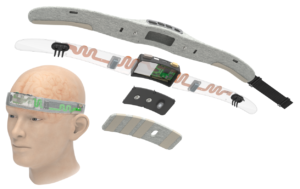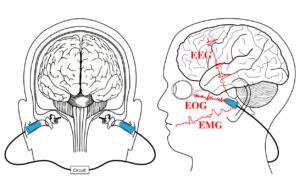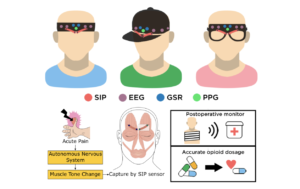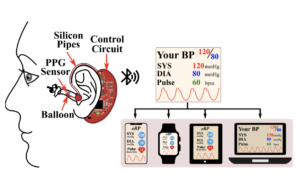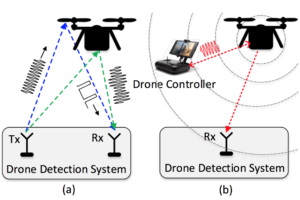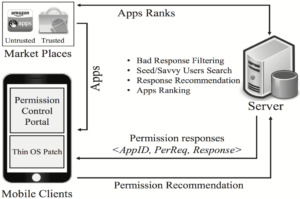The mCyPhI Lab is seeking highly motivated Ph.D. students to join our cutting-edge research projects in Mobile Systems, Smart Healthcare, and Machine Learning. If you're passionate about pushing the boundaries of technology and innovation, take a look at my “Notes to Prospective Students” to learn more about joining our dynamic team!
Dr. Anh Nguyen
8 +
WINNING AWARDS
4 +
PATENTS
30 +
PUBLICATIONS
SELECTED NEWS
- 04/2024:
Prof. Nguyen is awarded the Faculty Merit Award. Congratulations!
- 09/2023:
Our Earable paper is accepted by Nature Scientific Reports. Congratulations, team!
- 04/2023:
Our paper on an empirical study of 5G is accepted to IEEE Transactions on Mobile Computings. Congratulations, team!
- 04/2022:
Prof. Nguyen gives an invited talk at the University of Montana.
- 04/2022:
Prof. Nguyen gives an invited talk in the Sleep Medicine Journal Club directed by Professor Simon Kyle (University of Oxford).
- 01/2022:
Prof. Nguyen serves as a mentor in the N2 Women Mentorship Program in 2022.
- 11/2021:
Prof. Nguyen gives an invited Guest Lecture in a graduate NetSys class.
- 04/2021:
Prof. Nguyen gives an invited Guest Lecture in a graduate NetSys class.
- 03/2020:
Our Painometry is accepted to ACM MobiSys 2020. Congratulations, team!
- 10/2019:
Our eBP is awarded Best Paper at ACM MobiCom 2019. Congratulations, team!
SELECTED PROJECTS
Anh Nguyen, Galen Pogoncheff, Ban Xuan Dong, Nam Bui, Hoang Truong, Nhat Pham, Linh Nguyen, Hoang Nguyen-Huu, Khue Bui-Diem, Quan Vu-Tran-Thien, Sy Duong-Quy, Sangtae Ha, and Tam Vu
Abstract
Difficulty falling asleep is one of the typical insomnia symptoms. However, intervention therapies available nowadays, ranging from pharmaceutical to hi-tech tailored solutions, remain ineffective due to their lack of precise real-time sleep tracking, in-time feedback on the therapies, and an ability to keep people asleep during the night. This project aims to enhance the efficacy of such an intervention by proposing a novel sleep aid system that can sense multiple physiological signals continuously and simultaneously control auditory stimulation to evoke appropriate brain responses for fast sleep promotion. The system, a lightweight, comfortable, and user-friendly headband, employs a comprehensive set of algorithms and dedicated own-designed audio stimuli. Compared to the gold-standard device in 883 sleep studies on 377 subjects, the proposed system achieves (1) a strong correlation (0.89 ± 0.03) between the physiological signals acquired by ours and those from the gold-standard PSG, (2) an 87.8% agreement on automatic sleep scoring with the consensus scored by sleep technicians, and (3) a successful non-pharmacological real-time stimulation to shorten the duration of sleep falling by 24.1 min. Conclusively, our solution exceeds existing ones in promoting fast falling asleep, tracking sleep state accurately, and achieving high social acceptance through a reliable large-scale evaluation.
Anh Nguyen, Raghda Alqurashi, Zohreh Raghebi, Farnoush Banaei-kashani, Ann C. Halbower, and Tam Vu
Abstract
This project introduces LIBS, a light-weight and inexpensive wearable sensing system, that can capture electrical activities of human brain, eyes, and facial muscles with two pairs of custom-built flexible electrodes each of which is embedded on an off-the-shelf foam earplug. A supervised nonnegative matrix factorization algorithm to adaptively analyze and extract these bioelectrical signals from a single mixed in-ear channel collected by the sensor is also proposed. While LIBS can enable a wide class of low-cost selfcare, human computer interaction, and health monitoring applications, we demonstrate its medical potential by developing an autonomous whole-night sleep staging system utilizing LIBS’s outputs. We constructed a hardware prototype from off-the-shelf electronic components and used it to conduct 38 hours of sleep studies on 8 participants over a period of 30 days. Our evaluation results show that LIBS can monitor biosignals representing brain activities, eye movements, and muscle contractions with excellent fidelity such that it can be used for sleep stage classification with an average of more than 95% accuracy.
Hoang Truong, Nam Bui, Zohreh Raghebi, Marta Ceko, Nhat Pham, Phuc Nguyen, Anh Nguyen, Taeho Kim, Katrina Siegfried, Evan Stene, Taylor Tvrdy, Logan Weinman, Thomas Payne, Devin Burke, Thang Dinh, Sidney D’Mello, Farnoush Banaei-Kashani, Tor Wager, Pavel Goldstein, and Tam Vu
Abstract
Over 50 million people undergo surgeries each year in the United States, with over 70% of them filling opioid prescriptions within one week of the surgery. Due to the highly addictive nature of these opiates, a post-surgical window is a crucial time for pain management to ensure accurate prescription of opioids. Drug prescription nowadays relies primarily on self-reported pain levels to determine the frequency and dosage of pain drug. Patient pain self-reports are, however, influenced by subjective pain tolerance, memories of past painful episodes, current context, and the patient’s integrity in reporting their pain level. Therefore, objective measures of pain are needed to better inform pain management. This project explores a wearable system, named Painometry, which objectively quantifies users’ pain perception based-on multiple physiological signals and facial expressions of pain. We propose a sensing technique, called sweep impedance pro!ling (SIP), to capture the movement of the facial muscle corrugator supercilii, one of the important physiological expressions of pain. We deploy SIP together with other biosignals, including electroencephalography (EEG), photoplethysmogram (PPG), and galvanic skin response (GSR) for pain quantification. From the anatomical and physiological correlations of pain with these signals, we designed Painometry, a multimodality sensing system, which can accurately quantify different levels of pain safely. We prototyped Painometry by building a custom hardware, firmware, and associated software. Our evaluations use the prototype on 23 subjects, which corresponds to 8832 data points from 276 minutes of an IRB-approved experimental pain-inducing protocol. Using leave-one-out cross-validation to estimate performance on unseen data shows 89.5% and 76.7% accuracy of quantification under 3 and 4 pain states, respectively.
Nam Bui, Nhat Pham, Jessica Jacqueline Barnitz, Phuc Nguyen, Hoang Truong, Taeho Kim, Anh Nguyen, Zhanan Zou, Nicholas Farrow, Jianliang Xiao, Robin Deterding, Thang Dinh, and Tam Vu
Abstract
This is the abstract contentFrequent blood pressure (BP) assessment is key to the diagnosis and treatment of many severe diseases, such as heart failure, kidney failure, hypertension, and hemodialysis. Current “gold-standard” BP measurement techniques require the complete blockage of blood blow, which causes discomfort and disruption to normal activity when the assessment is done repetitively and frequently. Unfortunately, patients with hypertension or hemodialysis often have to get their BP measured every 15 minutes for a duration of 4-5 hours or more. The discomfort of wearing a cumbersome and limited mobility device affects their normal activities. In this work, we propose a device called eBP to measure BP from inside the user’s ear aiming to minimize the measurement’s impact on users’ normal activities while maximizing its comfort level. eBP has 3 key components: (1) a light-based pulse sensor attached on an inflatable pipe that goes inside the ear, (2) a digital air pump with a !ne controller, and (3) a BP estimation algorithm. In contrast to existing devices, eBP introduces a novel technique that eliminates the need to block the blood blow inside the ear, which alleviates the user’s discomfort. We prototyped eBP custom hardware and software and evaluated the system through a comparative study on 35 subjects. The study shows that eBP obtains the average error of 1.8 mmHg and -3.1 mmHg and a standard deviation error of 7.2 mmHg and 7.9 mmHg for systolic (high-pressure value) and diastolic (low-pressure value), respectively. These errors are around the acceptable margins regulated by the FDA’s AAMI protocol, which allows mean errors of up to 5 mmHg and a standard deviation of up to 8 mmHg.
Phuc Nguyen, Hoang Truong, Mahesh Ravindranathan, Anh Nguyen, Richard Han, and Tam Vu
Abstract
Drones are increasingly flying in sensitive airspace where their presence may cause harm, such as near airports, forest fires, large crowded events, secure buildings, and even jails. This problem is likely to expand given the rapid proliferation of drones for commerce, monitoring, recreation, and other applications. A cost-effective detection system is needed to warn of the presence of drones in such cases. In this project, we explore the feasibility of inexpensive RF-based detection of the presence of drones. We examine whether physical characteristics of the drone, such as body vibration and body shifting, can be detected in the wireless signal transmitted by drones during communication. We consider whether the received drone signals are uniquely differentiated from other mobile wireless phenomena such as cars equipped with WiFi or humans carrying a mobile phone. The sensitivity of detection at distances of hundreds of meters as well as the accuracy of the overall detection system are evaluated using software defined radio (SDR) implementation.
Bahman Rashidi, Carol Fung, Anh Nguyen, Tam Vu, and Elisa Bertino
Abstract
In current Android architecture, users have to decide whether an app is safe to use or not. Technical-savvy users can make correct decisions to avoid unnecessary privacy breach. However, most users may have difficulty to make correct decisions. DroidNet is an Android permission recommendation framework based on crowdsourcing. In this framework, DroidNet runs new apps under probation mode without granting their permission requests up-front. It provides recommendations on whether to accept or reject the permission requests based on decisions from peer expert users. To seek expert users, we propose an expertise rating algorithm using transitional Bayesian inference model. The recommendation is based on the aggregated expert responses and its confidence level. Our evaluation results demonstrate that given sufficient number of experts in the network, DroidNet can provide accurate recommendations and cover majority of app requests given a small coverage from a small set of initial experts.

